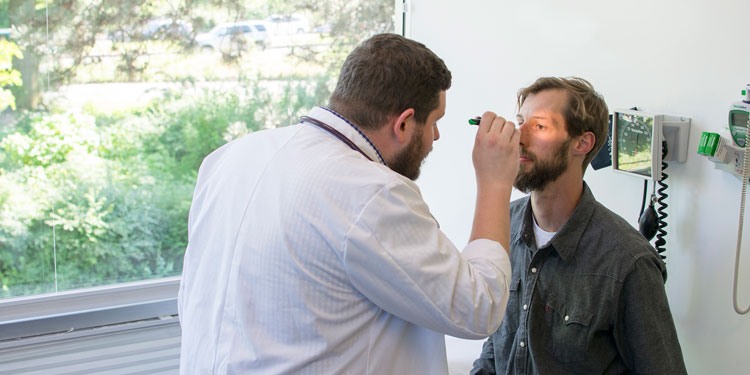NUNM’s Kayle Sandberg-Lewis, LMT, MA, discusses the link between brain injuries and SIBO.
When SIBO survives your best treatment efforts, make sure brain injuries have been included in your list of underlying risk factors. The link between neuronal damage and GI problems is immediate and extensive. What may elude you is recognition of what constitutes brain injuries.

The problem is, brains are easily injured, and our culture is only recently catching up with recognizing this truth. In fact, it is now understood that brain injuries are not “events” that one shakes off but “processes” because once injured, even slightly, damaged neurons degrade over time. Consequently, sequelae to brain injuries may take days, weeks, even years, to manifest.
And they accumulate as in chronic traumatic encephalopathy, CTE.
Most people who have no specific history of frank concussion will deny brain injuries. Because of this, when prepping my clients for our intake, I ask them to place a paper in a central location such as their refrigerator, and whenever an incident comes to mind, to note it with an approximation of their ages at those times. I ask them, if possible, to interview trusted family members regarding family lore – is there any story about rolling off the changing table, falling down the stairs, falling off the couch or other similar event? Any near drowning experiences? Was there birth trauma, early developmental trauma or other early childhood event?
Did they fly off bikes, fall out of trees, head the ball in soccer? Were they thrown from a horse or two? Did they drink heavily in high school, college or young adulthood? Broken noses equal brain injuries. Ever black out? Faint? How many car accidents, even low impact, have there been? (Neuronal damage occurs at speeds as low as 3 miles/hour.) Has this person ever landed abruptly on their rear end or back? (Remember: The CNS is comprised of the spinal cord and the brain – a jolt to the butt will shake the brain.)
What about surgeries requiring general anesthesia? Have there been chemical exposures to neurotoxins? Has this client been subjected to domestic violence?
There are times when people won’t remember an injury until their head or neck is touched.
So, what’s the connection between brain injuries and GI issues? The autonomic and enteric nervous systems are tightly intertwined. When there’s even minor damage anywhere in the CNS, the ANS and enteric system activate and signal for the release of stress hormones which are inflammatory. Vagal tone suffers.
Impaired vagal motor activity leads to reduced intestinal contractility, impairing motility, defecation and valve control. This all leads to bacterial translocation.
The brainstem may become disintegrated, leading to dysautonomia, which alters heart rate, visceral blood flow, digestive enzyme release and blood glucose.
In murine studies, microvilli are shedding in the intestinal mucosa within three hours of a minor brain injury. Villi have shrunk and the mucosa is showing signs of ulceration within 72 hours. By one week, there is mucosal atrophy, fusion of adjacent villi & inflammatory cell infiltration
Breakdown of the blood brain barrier occurs, which can cause extensive subcortical damage, including dysregulation of the corticopontine fibers—further disrupting motor activity—insular cortex, and hypothalamus, which leads to altered interoceptive processing: a possible explanation of visceral hypersensitivity.
The breakdown of the blood brain barrier also affects brain immune function. Post brain injury, microglia are primed, making them hypersensitive and hyperreactive. The inflammatory cytokines traveling through the blood from the ulcerated gut to the brain provide a secondary injury to the microglia, causing permanent inflammation, making neuropsychiatric and/or neurodegenerative sequelae more likely.
Once identified, what recourse is available? According to standard practice medicine, none. In our practice, however, we have had significant success with initial application of Low Energy Neurofeedback System (LENS), followed by other forms of neurofeedback and Bioregulation Therapy (BRT) a form of PEMF.
One caveat: When motility turns back on, there may be a period of discomfort due to visceral hypersensitivity. It has proven easier to cope with when framed as a positive sign.